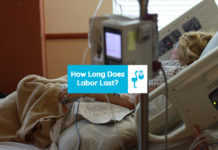A woman might find it more comfortable to be inside her known environment, like mamma birdy in her nest, giving birth to her baby. With the help of a midwife and labor coach, it is possible for anyone to have a home birth.
The first birth on the planet and subsequent birth for ages were home births. But that does not imply that this process is a stone-age practice and outdated. People born in the time period before the development of vaccines or labor wards were not all infected with diseases.
At present, around 1-3% of births in different regions are at-home deliveries. Pregnancy complications make a hospital delivery preferable but do not nullify the safety of delivering a baby at home. Infections and neonatal stress can happen anywhere and midwifery includes bringing all necessary equipment.
Is it legal to have a home birth?
In some places, law codes consider having a home birth along with a midwife is not legal. However, having a home birth without any planned assistant is legal.
The stories of women giving birth in cabs or bathroom floors are not uncommon. And declaring this illegal is not possible for obvious reasons. But there are many countries that totally sanction having a delivery at home as legal.

Who can give birth at home?
A home birth suits a woman who has a low-risk pregnancy and is carrying a single child. In the case of twins, the chance of complications from giving birth at home is higher. It is because the second baby may need the use of suction or artificial assistance for delivery.
Here is a list of factors to help you decide:
- A low-risk healthy pregnancy with all development milestones achieved.
- A mother wanting to have a natural delivery calls for a home birth as the first choice.
- No risk of infections such as HIV or STDs that can transfer to the baby.
- Normally proceeding stages of labor.
- A birthing center or hospital not far off than 30 miles assures an alternative at hand.
- Desire to have family members along during delivery.
- You don’t want to have epidural, pain killers, or artificial assistance in labor.
What are the reasons to not give birth at home?
The reasons for avoiding a home birth can be because you are having infections, preeclampsia, or diabetes. There are situations where the birth partner is not ready. It may be because they are apprehensive of the safety or find it messy. You can convince them of it after you learn about it. Midwives can highlight the real aspects and benefits of delivering a baby at home.
Other actual reasons for not having a birth at home are high blood pressure or a history of preterm labor. If the mother is obese or aged then the doctors don’t wait for natural labor and plan a c section. Similarly, for mothers who have had a previous C section, a VBAC at home is not completely safe.
Giving birth at home
Who can have a home birth?
Any woman who wants to give birth inside her house can opt for it. Previous pregnancy complications do not imply that you cannot have a second birth at home.
It is also possible that you shift to a hospital even after trying to give birth at home. But if you are living in a remote area with limited access to facilities and far away from the hospital then switching in between won’t be likely. In that case, it is not safe to have your delivery at home.
To give birth at home you will have to hire a midwife and keep in touch. She will be there with you when you feel labor onset. A doula can help you if the midwife is not available before and after childbirth.
How can you have birth at Home?
You can either hire an independent midwife or contact a home birth service provider. She will discuss with you, all possible situations that may arise during delivery and your choices. You can chalk out a birth plan and the necessary steps you both will be taking.
How much does a home birth cost?
The midwife’s charges may vary but giving birth at home can cost $3000 or £5000.
Who all are there during a home birth?
The midwife might have a doula along who will set the bathtub and later clean it. They may even help you breastfeed colostrum to your baby. There are generally two women to help you during birth.
The midwife checks your dilation and ability to adjust to labor changes. She may either stay with you during your last stages of pregnancy or coordinate over the phone. Once active labor starts, the midwife will not leave you until delivery.
What things do you need for homebirth?
The midwife will bring along all the things you need for homebirth. The cost of it may either be included or added later on. You can buy the things needed for home birth yourself also. There are not very elaborate tools and instead of basic comforting items and cover-ups.
Your midwife will bring all the stuff beforehand and you can keep them anywhere cool and dry. It is possible that you already have the things needed for a natural home birth.
- Cover-ups to prevent your birthing equipment to get dirty
- Old towels that are soft to wipe and probably throw away
- Dustbin polybags enough to collect all rubbish
- Comforting snacks and drinks, scented candles
- Birthing stool or squatting mattress
- A bowl or polybag to collect in case you throw up
- Light blanket and room heater if it is cold
- Baby’s necessities like soft towel, clothing, baby wash, etc.
- Torch or hand mirror to look for dilation of the vagina and check any rupture of tissues
- Lots of newspapers, or old mattresses to line the area from the birthplace to the toilet
Things such as maternity pads and clothing are common for hospital birth. There are no other additional things needed for delivering a baby at home. You can rent a birth pool if you would like a water birth.
The birth unit you consult might be supplying such birth pools that are sterile and safe. Your midwife will bring along sterile gloves and pads. Oxygen masks for you and your baby are also part of the birthing kit. She may also bring IV and herbal or other pain-relieving drugs.
How safe is home birth?
The modern method of delivering a baby at home is safe for any woman. The midwives have IV fluids, oxygen masks, suturing material and everything needed even in case of emergency.
Sanitary conditions are no longer like what they were years ago. You don’t have to worry about who is inside the ward and how many people are looking at your private parts. The comfort of home and presence of family members makes home-birth ideal.
Homebirth vs hospital birth statistics show that there is a higher risk of neonatal death in the first one.
When will you need to transfer to the hospital during a home birth?
In case the mother gives up and needs an epidural or the fetus is under stress shifting to the hospital becomes necessary. Your midwife will continue to support and help you even when you shift. Pregnant mothers who live far away from hospitals should not try giving birth at home.
During delivery, upon monitoring your conditions, your midwife can tell you exactly when and if you need to shift to the hospital.
It is natural to feel low if you have to eventually land up in a hospital after delivering at home. But it is possible that it is for treating laceration or neonatal care. There is no guarantee that mothers who have hospital birth don’t have complications.
What are the benefits of home birth?
The main advantage is the comfort and convenience of being at home. You don’t have to go and come from a hospital. The neonatal care is extensive and it is not that messy. You are able to bond with your baby.
Birth partner or baby daddies too find home birth easier to join the birthing process. It is easy on your pocket!
You must join childbirth classes to educate yourself and your partner about delivery. The tips for successful delivery include hiring the right midwife. You must consider her experience and past record.
Don’t go overboard with the package of home birth. Be open to the idea of transferring to the hospital in case there is an emergency.





![Why Do You Fast Before Cesarean? [Fasting Before C-Section Facts] Why do you fast before Caesarean?](https://www.pregnanteve.com/wp-content/uploads/2019/03/fast_before_cesarean-218x150.jpg)



